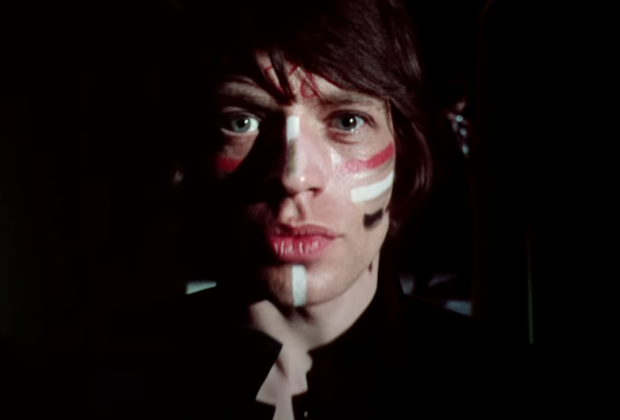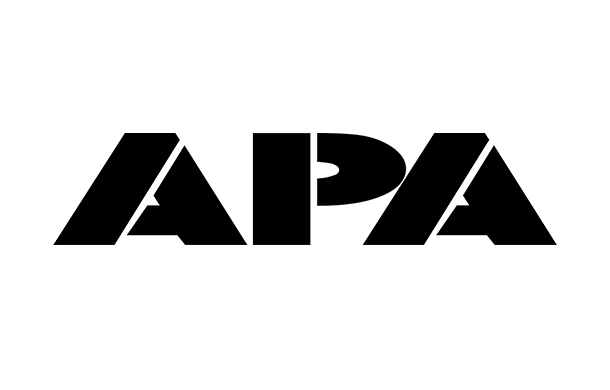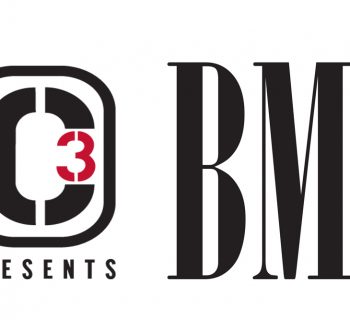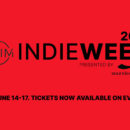This August, The Rolling Stones and ABKCO Music & Records Inc. released the official music videos of The Rolling Stones performing “Jumpin’ Jack Flash”. Originally produced in 1968 the videos have been faithfully restored in 4K resolution.
The video releases are two different versions of “Jumpin’ Jack Flash” (one with makeup and one without) directed by Michael Lindsay-Hogg (The Rolling Stones Rock and Roll Circus, Let It Be) and were shot over the course of a single day at Olympic Studios in London during the spring of ’68.
The first version, featuring a makeup-free Stones, has the distinction of incorporating a completely unique version of the song (vocals and all other instruments), whereas the version with a makeup-clad Mick Jagger, Keith Richards, Brian Jones, Bill Wyman and Charlie Watts utilizes a fresh Jagger vocal take over the backing track from the single.
“We shot the one without the makeup first,” explained Michael Lindsay-Hogg in an August 4, 2022 media press statement from ABKCO Music and Records, Inc.
“They were great. As we were doing it, I felt there was an ingredient missing, although at that point I didn’t know what it was. We had a small meal break and I saw Brian Jones sitting by the makeup table and sort of playing with the colors—putting it on his face and then wiping it off—and I thought, ‘Huh. That’s a real interesting look.’ And so I said to Mick, Keith, Charlie and Bill, ‘Just go over there to the makeup table and see what it’s like if you put some stuff on your face—either stripes or eye makeup, or full-face glitter, whatever strikes you.’”
Lindsay-Hogg continues, “They worked with our very bright makeup person Linda DeVetta and they kind of got into it. After about an hour they looked different, especially Keith and Brian. Then we found the big, space alien glasses. We got something much better than we might have had, left to our own devices. It crystallized what it should be. It’s one of those serendipitous moments where all the things that might have gone wrong, didn’t.”
Lindsay-Hogg notes, “The director of photography, Tony Richmond, and I thought there’s another way to light them as well, because it was kind of general performance lighting on the first one we shot in the early afternoon.
“In the second version, we shot them in these shadows. It was much more to do with shadows, and Mick coming in and out of light, and that whole little walk he does at the beginning. We put that together, and that’s the one they liked best because it had a slightly decadent feel to it. When I edited them and played them back, they loved the videos. I’d hate to think they didn’t, because then I went on to do their videos for 15 years.”
Long before the advent of MTV, music videos (then referred to as promotional films, or “promos” for short) were few and far between, with very limited outlets to air them.
The most popular bands such as The Rolling Stones, The Beatles and The Who, made these “promos” did so with the intent of allowing broadcast in several different countries without the bands having to travel to perform in TV studios where there were “genuine security issues” according to Lindsay-Hogg, who directed pioneering videos for all three acts. Top of the Pops, the aforementioned Ready Steady Go!, Shindig!, Hullabaloo and The Smothers Brothers Comedy Hour in the US were early participants in broadcasting such materials.
The Rolling Stones, who were already international superstars by the mid-1960s, now had another tool to help push a single such as “Jumpin’ Jack Flash” (UK #1, US #3) into the upper echelons of the charts.
Before capturing The Rock and Roll Circus on celluloid, director Michael Lindsay-Hogg had helmed many of The Rolling Stones’ promotional video clips: “She’s a Rainbow,” “2000 Light Years From Home,” “Child of the Moon,” and “Jumpin’ Jack Flash,” as well as The Beatles’ “Paperback Writer,” “Rain,” “Hey Jude” and “Revolution.”
Lindsay-Hogg is the legendary music video director behind The Beatles’ Let It Be feature film and many of The Rolling Stones’ seminal video clips. During the course of his career, he has directed specials for Simon and Garfunkel, Neil Young, Paul Simon and The Who.
Michael Lindsay-Hogg is the author of the well-received and wonderful 2011 autobiography Luck and Circumstance: A Coming of Age in Hollywood, New York and Points Beyond.
Lindsay-Hogg is the son of the acclaimed actress Geraldine Fitzgerald, who starred as Marilyn Birchfield in the drama The Pawnbroker directed by Sidney Lumet.
Like visionary director/producer Jack Good before him, both studied at Oxford, Michael Lindsay-Hogg viewed and lensed rock ‘n’ roll as a dramatic subject. Michael’s first job, at age 16, was serving as an apprentice for John Houseman’s repertory theatre company in Stratford, Connecticut.
“I started out as a child actor and fell in love with the theater,” Michael told me in a 2019 interview that was published in my 2021 book, Docs That Rock, Music That Matters.
“The first jobs I had were in Shakespeare on stage. And that’s how it started and I tried very much to bring some of those elements to Ready, Steady Go!”
This landmark British music programme was broadcast every Friday night debuting August 9, 1963 and a final taping December 23, 1966.
Harvey Kubernik is the author of 20 books. He is active in music documentaries, television endeavors and music journalism. In November 2006, Kubernik was a featured speaker discussing audiotape preservation and archiving at special hearings called by The Library of Congress and held in Hollywood, California.














